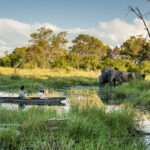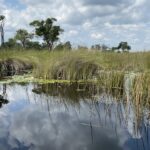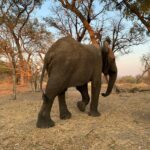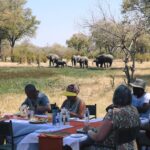When planning an African adventure, there are a thousand questions you can and should ask yourselves. But we’re here today to talk about a subject that’s often overlooked by safari-goers. Whether it’s your first time on an African adventure or your tenth, before you choose your Africa safari camp or lodge, ask about your safari vehicle.
The Importance of Your Safari Car
Your safari vehicle could make or break your trip. You’ll be in this car day in and day out for hours upon hours at a time. It will be how you get through the thick and wild Bush, and it will be responsible for taking you to the animals.
You might be surprised to learn that every Africa safari camp and lodge uses different vehicles. Sometimes it’s because they want to offer a special experience for their guests, and other times the differences are just about saving costs.
Choosing a company that uses a crappy safari car will leave you feeling vastly disappointed and jealous of every other safari vehicle you see. But if you’ve never been on safari before, how do you know what’s a good safari vehicle and what’s not?
6 Features You Want in Your Safari Vehicle
At Brave Africa, we have top of the line safari vehicles, and we think the experience is well worth it, but don’t take our word for it.
Let’s dive down into the type of experience you want on your African adventure and the kind of safari car you need to make it happen.
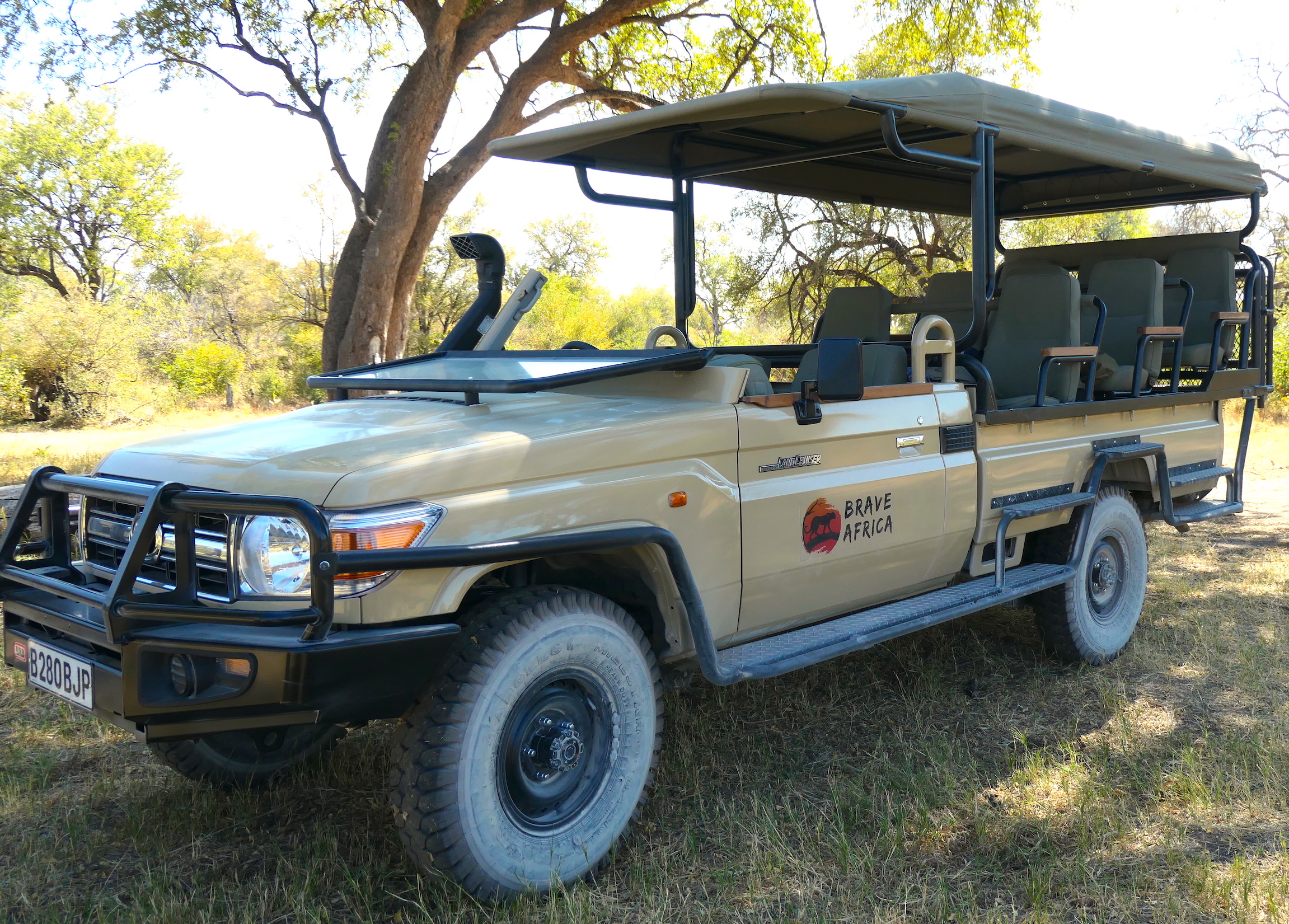
Every Brave Africa safari is custom-built to handle the Botswana Bush. The stadium-style seats in the back are open to the environment but still protected by a canopy from the sun and rain. There’s a snorkel that allows us to go through deep water, custom tires/wheels, a fold-down windshield, USB charging ports, a storage cooler, and more.
1. Toyota Land Cruiser
Twenty-five years ago, the Land Rover was the standard safari vehicle. But as soon as the Toyota Land Cruiser entered the market, it became the new Toyota safari truck, and the game changed forever.
Toyota Land Cruisers are incredible vehicles that can handle the muddiest of conditions without getting stuck. It’s a powerful and dependable vehicle that’s known for exceptional performance, reliability, and durability. It offers a smooth ride even in the toughest of conditions, and it can go for days on a single tank of diesel, of which the safari car has two.
However, an off-the-shelf factory Toyota Land Cruiser isn’t precisely what you’re looking for either. It should be specially modified for safari conditions. These modifications include:
- A snorkel that can handle deep water
- Updated shock and suspension system for a smoother ride
- Increased ground clearance
- Updated wheels and tires specifically designed to handle the African Bush
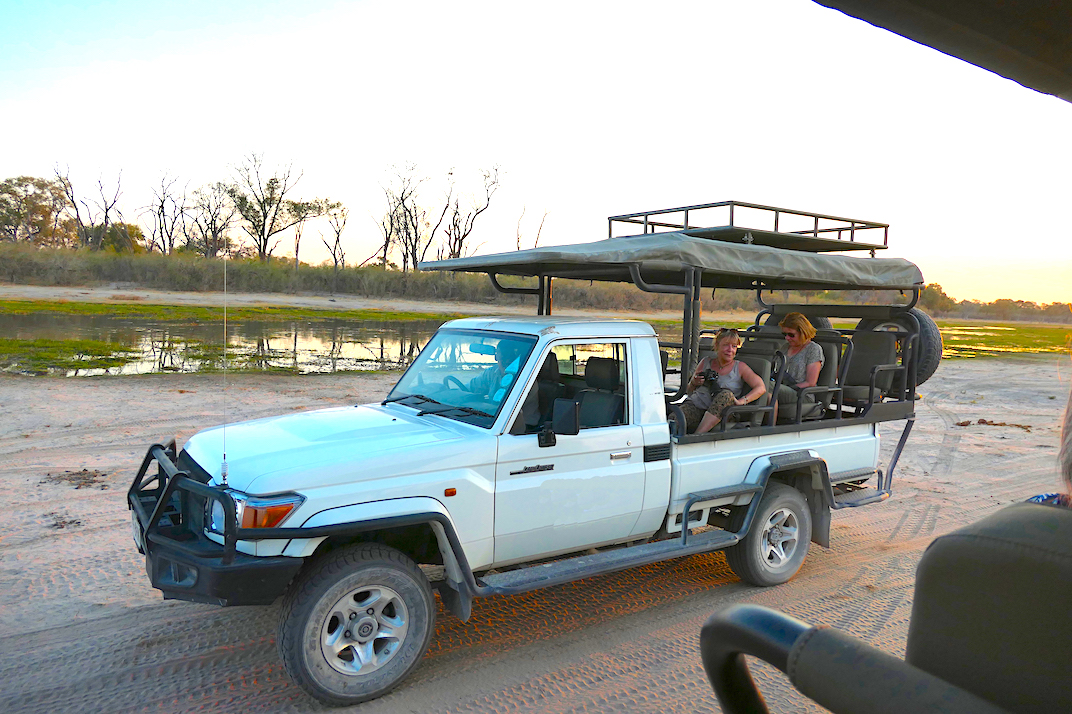
Notice the lack of modifications on this safari vehicle. There is no snorkel, which means deep water will be an issue. There also looks to be little to no modifications when it comes to the wheels/tires, the cab, and more. It’s basically a pickup truck with seating placed on the back.
2. Fully Open Vehicle
If you’ve done any safari research, you’ve probably seen tons of images of different types of vehicles. In Kenya and Tanzania, most safari camps and lodges prefer fully enclosed safari cars where you have to stand up for a clear view of the wildlife without windows.
However, in Southern Africa, including Botswana, you’re mostly going to find safari vehicles with a more open-air approach, but how open it is can drastically change your African adventure.
Open Seating in Your Safari Vehicle
First, let’s talk about your seating area. There are completely open safari vehicles—no windows, doors, or frames blocking your view. Then, some vehicles claim to “protect you from the elements” while at the same time changing how you experience the Bush.
How much access you want to the animals is up to you, but we think the more open, the better. We feel that having something between you and the animals takes away from the magic of your African Adventures. It transforms your experience into something more zoo-like and less “in your face” majesty.
A closed seating area will mean that you’ll deal with less dust, but we think that’s part of the safari experience. We’d rather breathe in a little dust and maybe get wet, but be right there ready and waiting to watch a lion walk by our car or hear an elephant trumpet at us.
However, no matter how open the car is, it’s the seating that matters too. You do not want to be in a car with middle seats. Ask your safari operator how many people they’ll allow per car. We max out at six occupants so that everyone has a window seat, and no one is stuck with a lousy view.
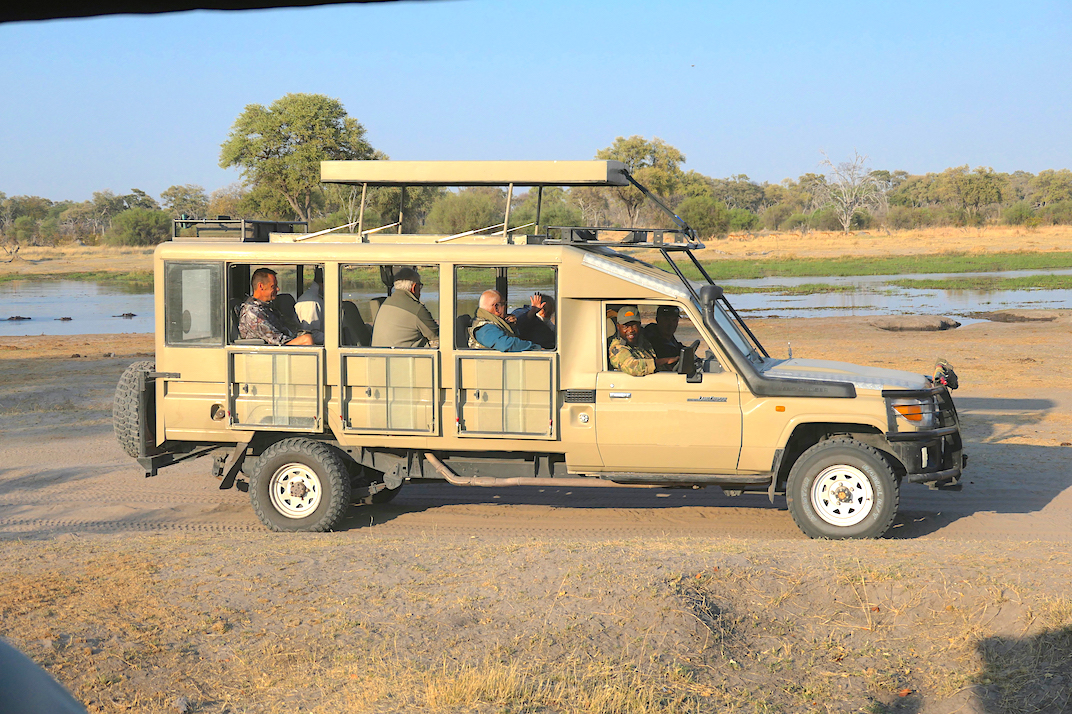
This safari vehicle offers a closed off seating area, which means an obstructed view of the wildlife as well as a hot backseat experience. More likely than not, there’s no air conditioning in the back, and with a closed-off front cab, very little chance for a breeze. That’s tough. And when it comes to birding, this car will not be helpful.
Open Cab Safari Car
Second, let’s talk about the driver’s cab. Even in safari cars where the entire seating area is open to the elements, you might find a situation where the cab is closed. This is definitely something you DO NOT want.
A closed cab means you are closed off from your safari guide. Yes, he or she might still be able to talk to you by leaning out the window, but it’s going to be ten times harder to interact with them, which will greatly detract from your experience.
Your safari guide is essential to your time in the Bush. They’ll explain animal behavior, unique plants, and more. Think of it like being in the car with a live Wikipedia page that can answer all your questions on the spot without the Internet.
Now, imagine that to get to your Wiki page, you had to click ten different buttons to find the answer you wanted. That would get annoying quickly, right? That’s the same with a closed cab. If you don’t have direct and easy access to your guide, you won’t be able to hear what he or she has to tell you throughout your drive, and you’ll lose out on an incredible amount of insight.
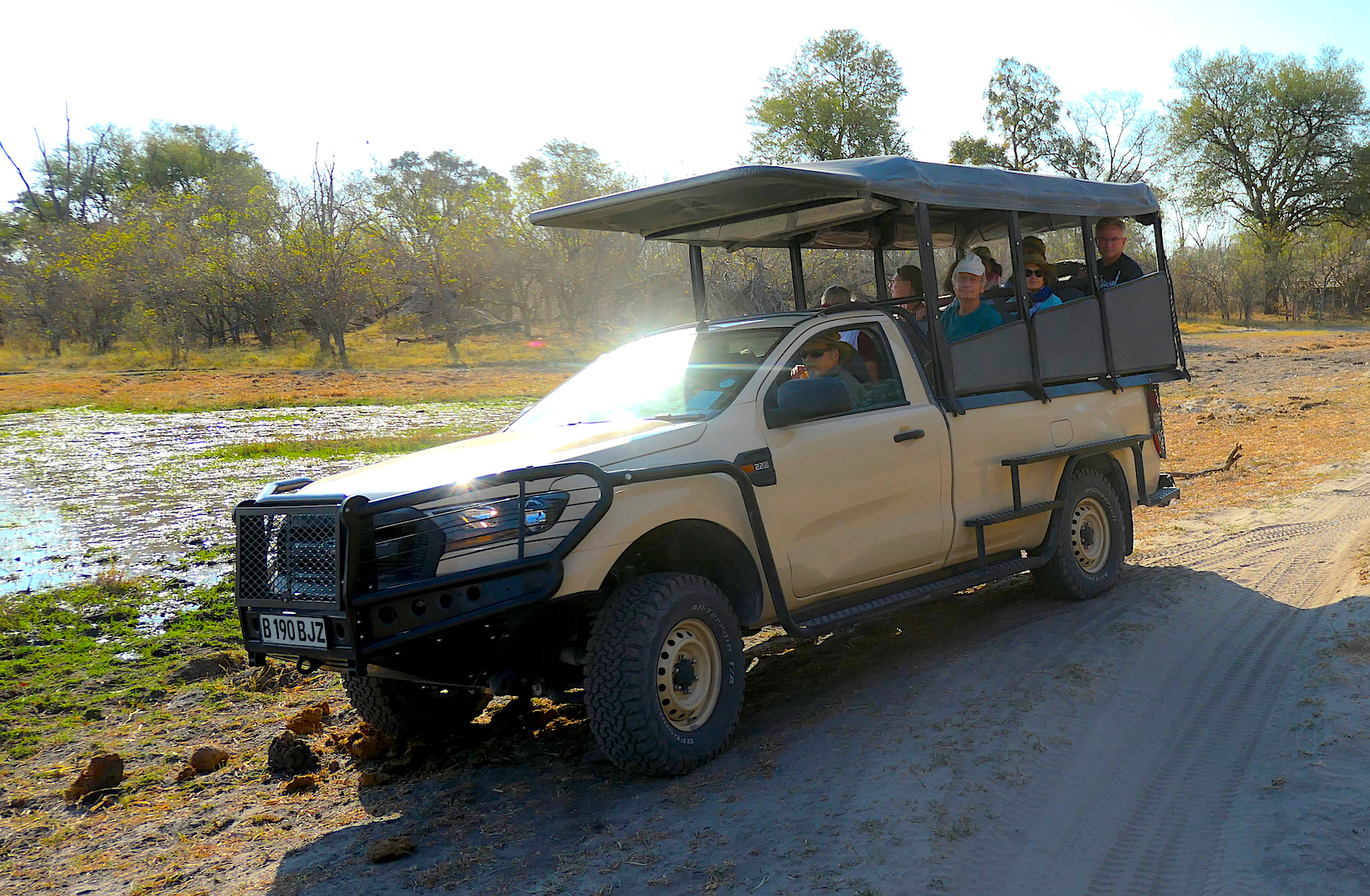
This safari vehicle has a closed cab, which makes it difficult for guests to talk with their guide for a far less personal experience. It also has a very closed in seating area. Those guests in the back row have very limited viewing. Also, notice the middle seat…that’s a lot of guests in one vehicle.
3. Canopy Cover
Now, a fully open vehicle is excellent, except when you don’t have a canopy! Yes, Botswana might be a desert, but that doesn’t mean it won’t ever rain, and when it rains, you want a canopy to keep you from getting soaked. But even when it doesn’t rain, a canopy is fairly essential.
The sun is hot and in Botswana—with an average of 3,300 hours of sunshine every year—and that means you want to be in the shade as much as possible. A fully open cab without even a canopy will mean you have no protection from the elements.
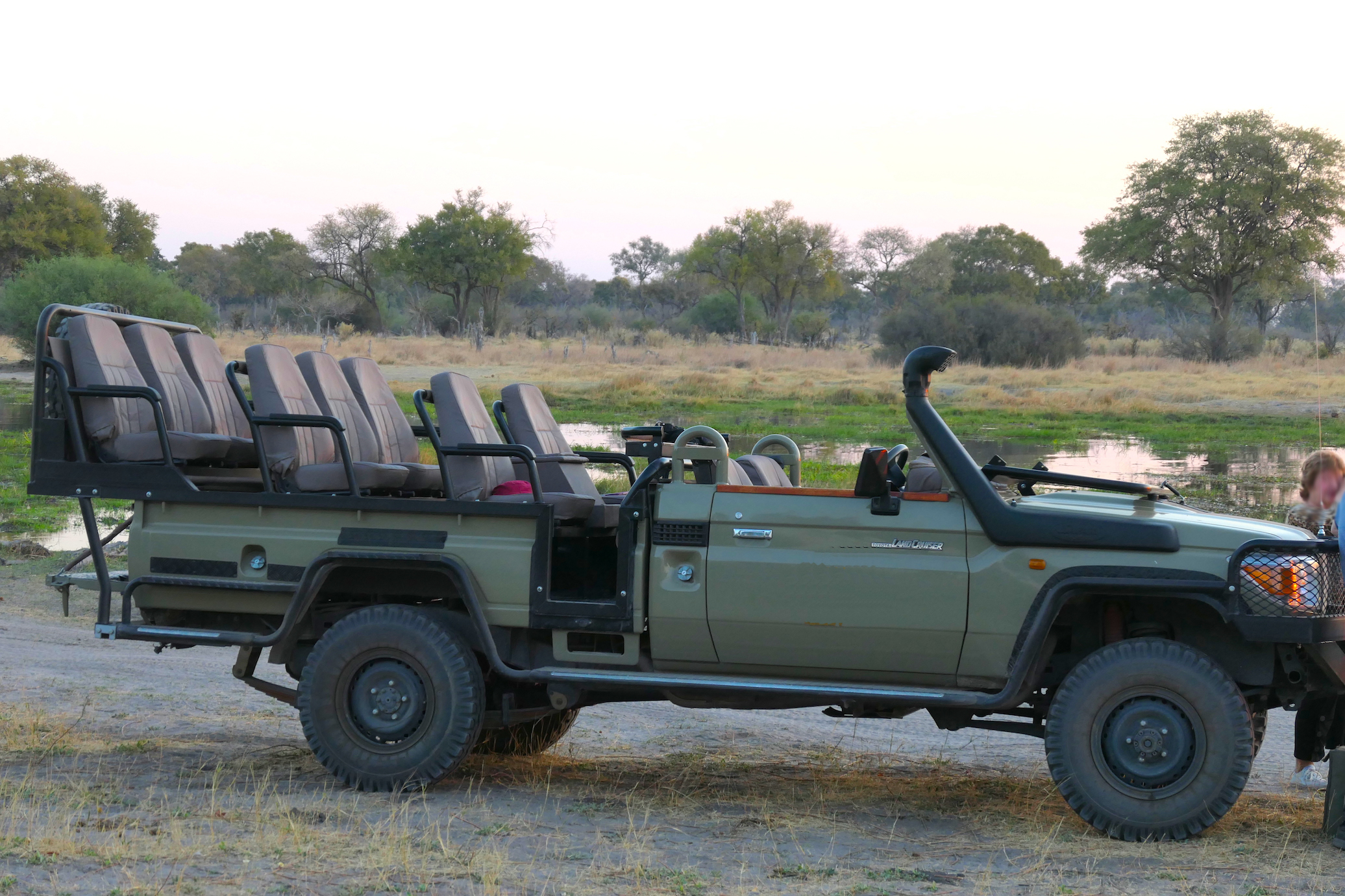
Without a canopy, guests in this vehicle will have no relief from the sun or rain.
4. Safari Car Power Charging
Access to power is critical even in the middle of the Bush. Between our guests’ cameras, phones, and other technology, we know that having the ability to charge your devices is essential to an enjoyable experience. And with 12- to 13-hour game drives, relying on only battery power can be nerve-wracking.
That’s why every Brave Africa safari vehicle offers two USB charging stations at each seat, so you can charge two items at once throughout your daily game drives. You’ll never have to worry about going without power.

Every Brave Africa safari vehicle offers 2 USB ports per seat. Here’s a picture of the four slots for the two front seats.
5. Refrigerator System
When it’s 35 degrees Celsius (95F), it’s way too hot not to have access to ice-cold water, juice, soda, or beer to cool you down in the heat. So, before you choose your African adventure safari, ask the operator if they have a refrigerator system in their safari car.
In the middle of Brave Africa’s first row of passenger seats, we have a large refrigerator that can hold around two dozen cold drinks. This means that no matter how far away from camp you are, you can still enjoy crisp cold drinks on a blistering day.
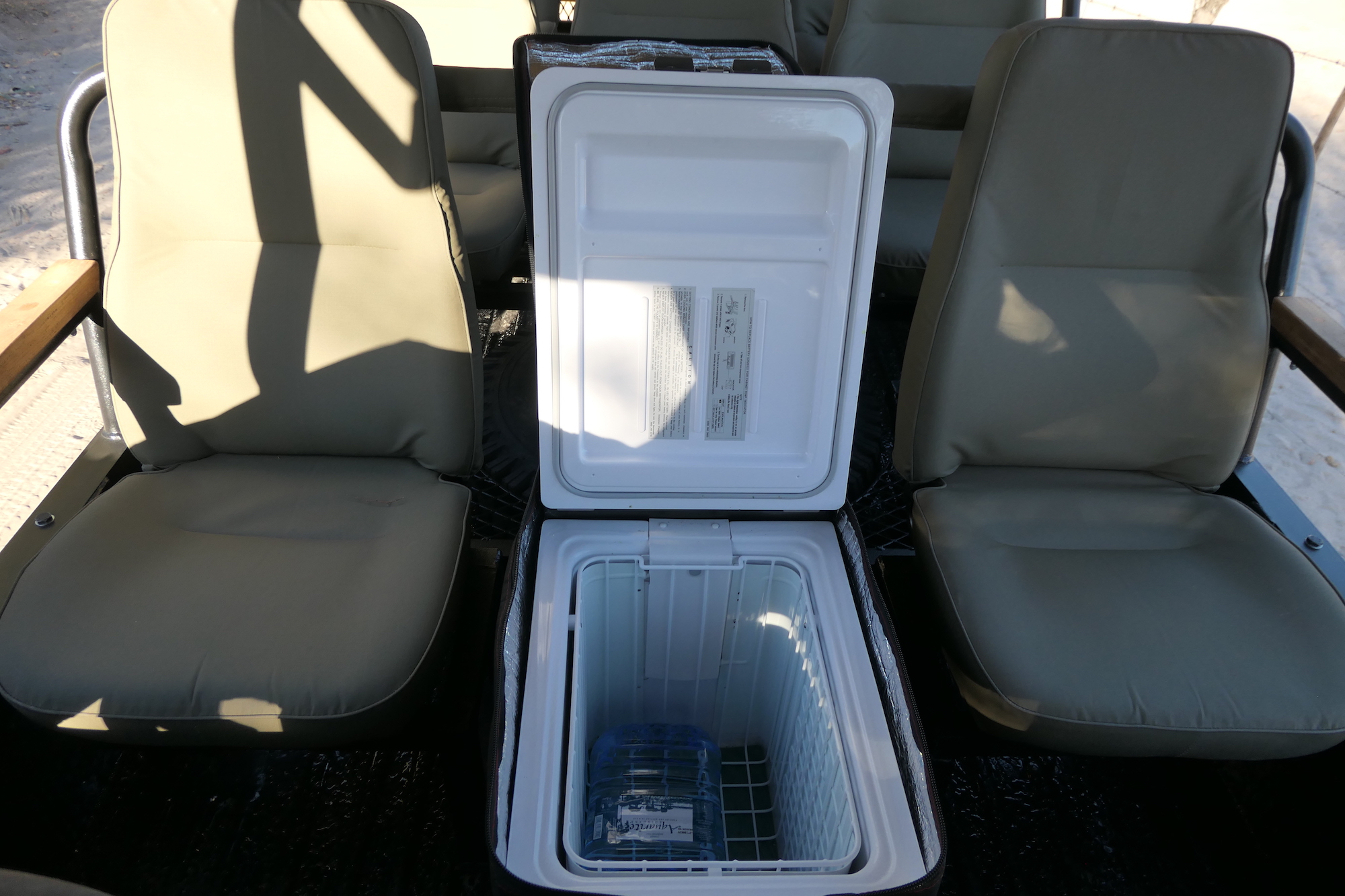
Between the first two seats, we added a cooler for ice-cold drinks and food on every game drive.
6. Storage Options
When you’re on all-day game drives, you need to be able to bring a lot of stuff with you to have a good experience, and that means you need storage space. You need room to store your day bag with your camera, phone, spare jacket, and other personal items. There also needs to be room for snacks, lunch, tables, chairs, and other items you might need on your all-day drive.
At Brave Africa, we max out our vehicle at six guests, so there’s plenty of room to leave your bag. In the back two rows, you can place your stuff in the middle seat. In the front row, you can put your items on top of the refrigerator. There’s also plenty of room to put your bag at your feet as needed.
As for storage for tables and chairs, we’ve built on an extra storage rack on the back of the vehicle. This rack can be folded down or up and used to store guest luggage to and from the airport. We also use it to carry tables and chairs for lunch in the Bush—a requirement for every African adventure.

We built a custom storage rack onto the back of every Brave Africa safari vehicle. This rack can be used to store guest luggage, tables, chairs, and more.


